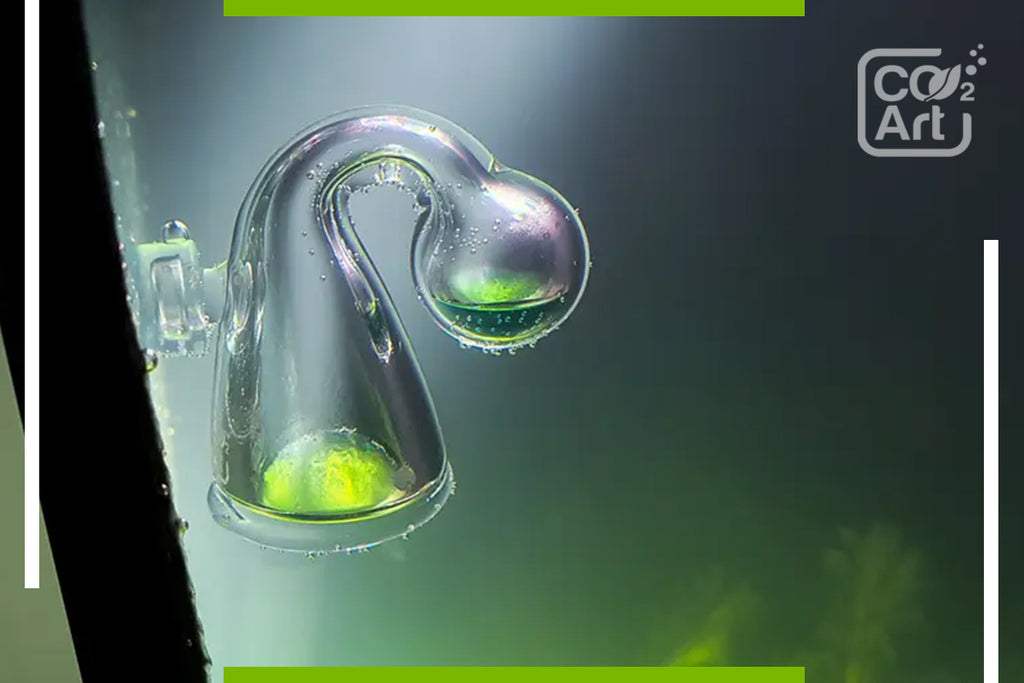How to Measure CO2 Levels in an Aquarium
As hobbyists delve deeper into the world of aquatic plants and fish, ensuring the right amount of CO2 in a planted tank becomes paramount. Carbon dioxide plays a significant role in the health and vitality of aquatic plants, and having the right amount can significantly impact plant growth. This article will guide you through various methods on how to check CO2 levels in your tank and the advantages of some of these methods in planted tanks.
1. The Importance of CO2 Monitoring
Balanced CO2 levels are vital for a thriving planted tank. Too little CO2 can stunt plant growth and health, while an excess can be harmful to fish. By understanding how to accurately measure CO2, one can maintain a harmonious balance that benefits both aquatic animals and plants.
2. Drop Checker: A Visual CO2 Indicator
Among various tools, there is a common method that any aquascaper should know: the drop checker stands out for its visual simplicity and effectiveness. Acting as an aquarium CO2 indicator, that thanks to its reagent- bromothymol blue, offers hobbyists a straightforward way to determine CO2 concentration. The liquid inside changes drop checker colour, typically from blue (low CO2) to darker green- to lime green (optimal) to yellow (high CO2), offering a quick visual representation of the CO2 levels in the tank. The bromothymol blue used in the solution is a common reagent used to measure ph. Therefore, when we look at the CO2 tables in the net, The opposite column usually refers to the pH levels.
3. The Role of pH and KH in CO2 Measurement
While a drop checker offers a visual representation, combining pH and KH [carbonate hardness] readings can give a more precise CO2 concentration in tank water. Using an aquarium CO2 calculator, one can input these two values to determine the CO2 concentration.
4. Utilizing the Aquarium CO2 Test Kit
An aquarium CO2 test kit provides a more hands-on approach to understanding CO2 concentrations. These kits come with all the necessary components to conduct a test and provide more exact readings than some other methods.

5. Digital Aquarium CO2 Checker
For those inclined towards technology, a digital aquarium CO2 checker can be a valuable tool. By offering real-time readings, these checkers help in keeping a continuous check on the CO2 concentration, ensuring it remains within desired limits.
6. Assessing Plant Growth as an Indicator
While tools and kits are useful, observing your aquatic plants can also hint at CO2 imbalances. Suboptimal CO2 gas levels can lead to stunted or yellowing plants, indicating a need for adjustments. Healthy plant growth typically signifies a well-maintained CO2 concentration.

7. Symptoms of High and Low Carbon Dioxide Levels
Recognizing the signs of high or low CO2 can be crucial. Fish gasping at the surface might indicate excessive CO2, while poor plant growth and algae blooms can hint at insufficient CO2.
8. Importance of Regular Monitoring
To maintain a flourishing planted aquarium, regular monitoring is essential. Just as one might test aquarium water parameters, it's crucial to keep tabs on CO2 concentrations for optimal plant growth and fish health.
9. Drop Checker's Superiority
The advantages of using a drop checker go beyond its simplicity. The drop checker provides almost immediate feedback, is affordable, and serves as both a functional tool and an attractive addition to the planted tank.
Read more about the drop checker and how it works in detail in our great article about 7 Things You should know about the drop checker - LINK
10. Other Factors Influencing CO2 Concentrations
While we focus on external carbon dioxide addition, it's essential to remember that fish respiration and organic decomposition also contribute to the tank's CO2. Knowing these factors can aid in adjusting CO2 dosing as required.
Conclusion
Maintaining the right carbon dioxide balance in a planted aquarium is a blend of science and art. With the array of tools available, from drop checkers to digital monitors, achieving that balance becomes more manageable. Prioritizing regular monitoring and understanding the unique needs of your aquarium will ensure thriving plant growth and a healthy aquatic environment.
Any questions? Our Customer Service is always ready to answer them! Contact us directly via support@co2art.us!






